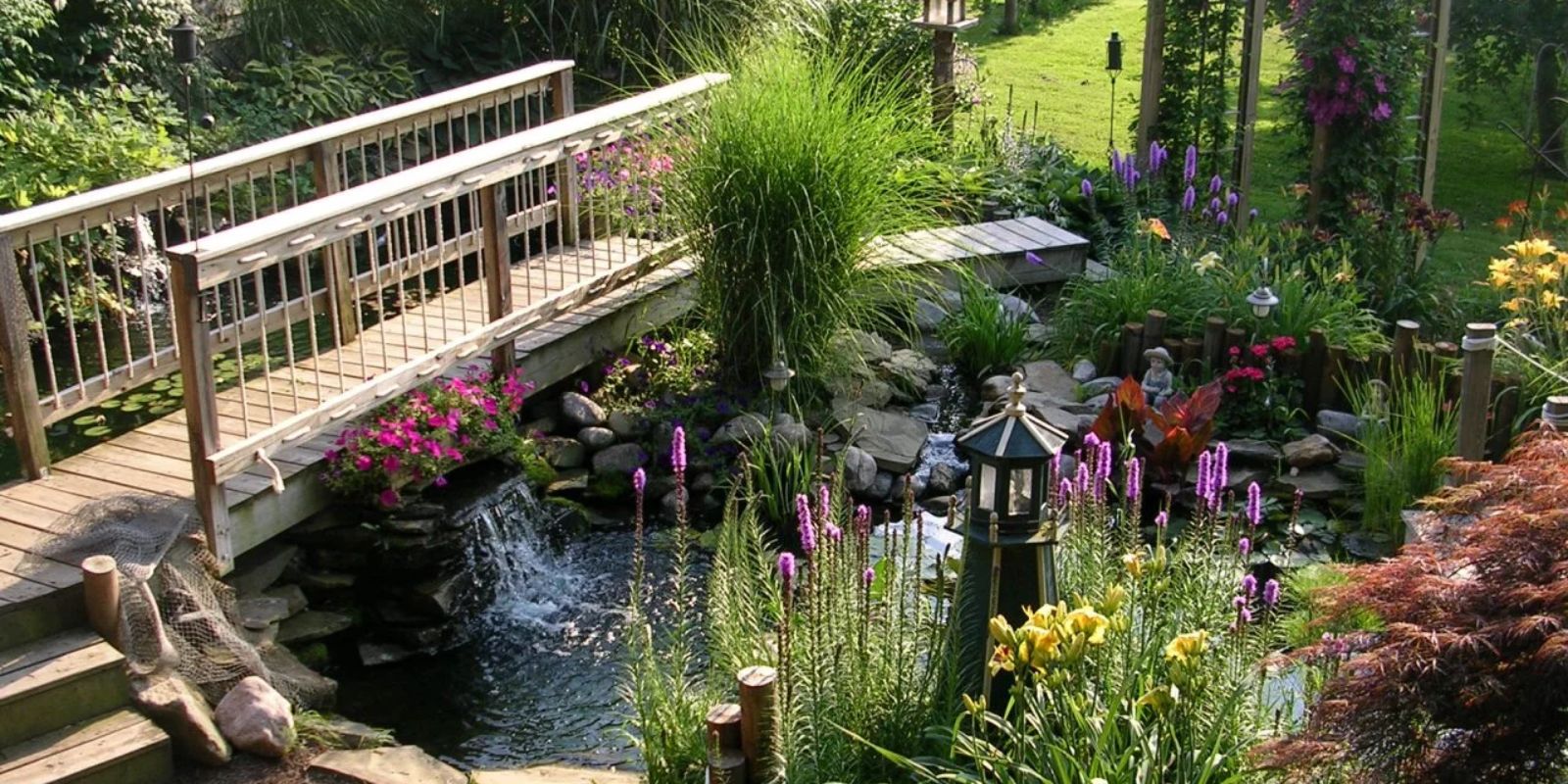Introduction:
A water garden can turn any indoor space into a calming retreat, offering both aesthetic appeal and a touch of nature’s tranquility. Whether you’re looking to enhance a large living area or add a touch of serenity to a smaller room, creating a water garden is an enjoyable and fulfilling project. This guide will walk you through the steps to build your own indoor water garden, from selecting the right location to maintaining it for long-lasting beauty.
Step 1: Choosing the Right Location
The first step in creating a water garden is selecting the ideal location within your home:
- Assess Space and Light: Look for a spot with adequate natural light, as most aquatic plants thrive in bright conditions. A south-facing window or a well-lit corner is ideal.
- Consider Accessibility: Choose a location that is easily accessible for maintenance. Ensure you can reach the garden to add water, remove debris, and tend to plants.
- Evaluate Surroundings: Avoid placing the water garden in a drafty or high-traffic area where it may be disturbed or affected by temperature fluctuations.
Step 2: Selecting a Container
The container you choose will define the size and style of your water garden:
- Material Options: Consider materials such as glass bowls, ceramic pots, or plastic containers. Ensure the container is waterproof and durable.
- Size and Shape: Select a size that fits your space and suits your design vision. Larger containers offer more room for plants and fish, while smaller ones are more manageable and fit well on tables or shelves.
- Design Aesthetics: Choose a container that complements your interior decor. Options range from sleek modern designs to rustic, natural finishes.
Step 3: Preparing the Container
Before adding water and plants, it’s important to prepare the container:
- Cleaning: Thoroughly clean the container to remove any dust, residues, or contaminants. Use mild soap and water, then rinse well to ensure no cleaning agents remain.
- Waterproofing: If using a container not specifically designed for water, check for leaks and seal any gaps if necessary.
Step 4: Installing a Water Pump (Optional)
For added ambiance and to maintain water quality, consider using a small water pump:
- Choose a Pump: Select a submersible pump designed for small water features. It should be appropriate for the size of your container and provide gentle water movement.
- Installation: Place the pump in the container before adding water. Ensure it is positioned to avoid obstructing the plants. Follow the manufacturer’s instructions for setup and operation.
Step 5: Filling the Container with Water
The type of water used and the filling process are crucial for the health of your water garden:
- Water Quality: Use distilled or filtered water to avoid introducing chlorine and other chemicals that can harm plants and fish. If using tap water, treat it with a dechlorinator.
- Filling Process: Slowly fill the container to avoid disturbing the substrate or plants. Leave some space at the top to prevent overflow.
Step 6: Choosing and Arranging Plants
Selecting and arranging aquatic plants is key to creating a beautiful and balanced water garden:
- Plant Selection: Choose plants that are suitable for indoor water gardens. Popular options include:
- Water Lilies: Known for their striking flowers and large leaves.
- Lotus: Offers beautiful blooms and large, attractive leaves.
- Water Lettuce: Provides a lush, floating canopy.
- Java Moss: Ideal for adding texture and covering surfaces.
- Plant Arrangement: Arrange plants in the container to create visual interest. Place taller plants towards the back and shorter ones towards the front. Ensure each plant has enough space to grow and thrive.
Step 7: Adding Decorative Elements
Enhance the visual appeal of your water garden with decorative elements:
- Stones and Pebbles: Add decorative stones or pebbles to the bottom of the container for a natural look and to anchor plants.
- Fish: Consider adding small fish like guppies or goldfish if the container is large enough. Ensure the water is properly filtered and maintained.
- Sculptures: Small statues or figurines can add a personal touch and complement the overall design.
Step 8: Regular Maintenance
Maintaining your water garden is essential for its health and longevity:
- Water Quality: Regularly check the water level and quality. Top up with distilled or treated water as needed.
- Debris Removal: Remove any debris, such as fallen leaves or dust, from the water surface and container.
- Plant Care: Trim any dead or overgrown plant parts. Ensure plants are growing well and adjust their placement if necessary.
- Pump Maintenance: Clean the pump periodically to prevent clogs and ensure optimal performance.
Troubleshooting Common Issues
Despite your best efforts, you may encounter some issues with your water garden:
- Algae Growth: If you notice excessive algae, reduce the amount of light and ensure proper water circulation. Adding a small amount of aquarium-safe algae control can help.
- Plant Problems: Yellowing leaves or poor growth may indicate water quality issues or improper light conditions. Adjust the care routine based on the specific needs of your plants.
Conclusion
Creating a water garden in your home is a rewarding way to bring nature indoors and enjoy the calming effects of water. By carefully selecting your container, plants, and decorative elements, and maintaining your garden with regular care, you can create a beautiful oasis that enhances your living space. Whether you choose to start with a small bowl or a larger container, the process of building and tending to your water garden will provide relaxation and enjoyment.
Motivation:
Dive into the world of indoor water gardens and transform your space into a peaceful retreat with a touch of natural beauty. Start your project today and create a serene haven right at home! 🌿💧

